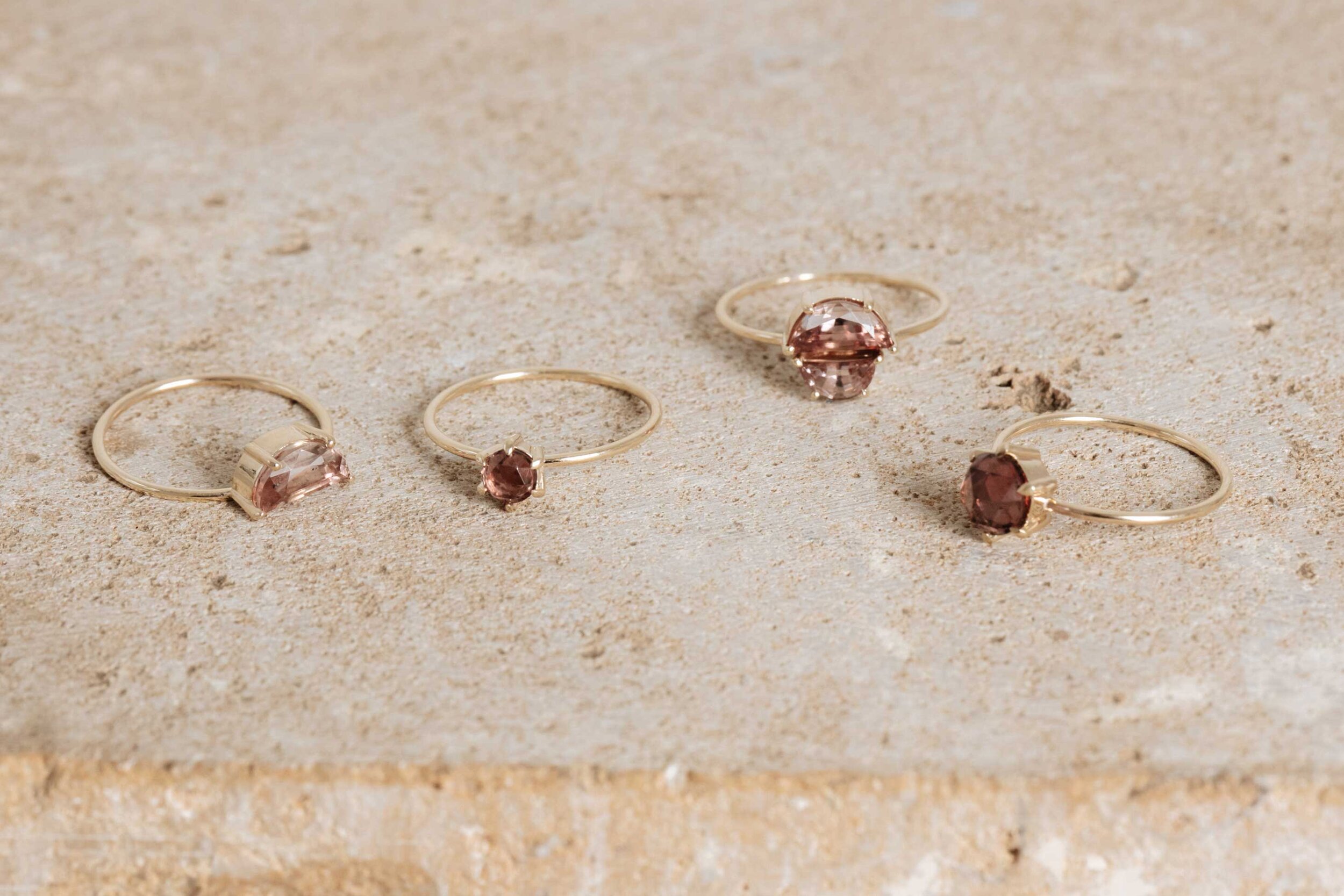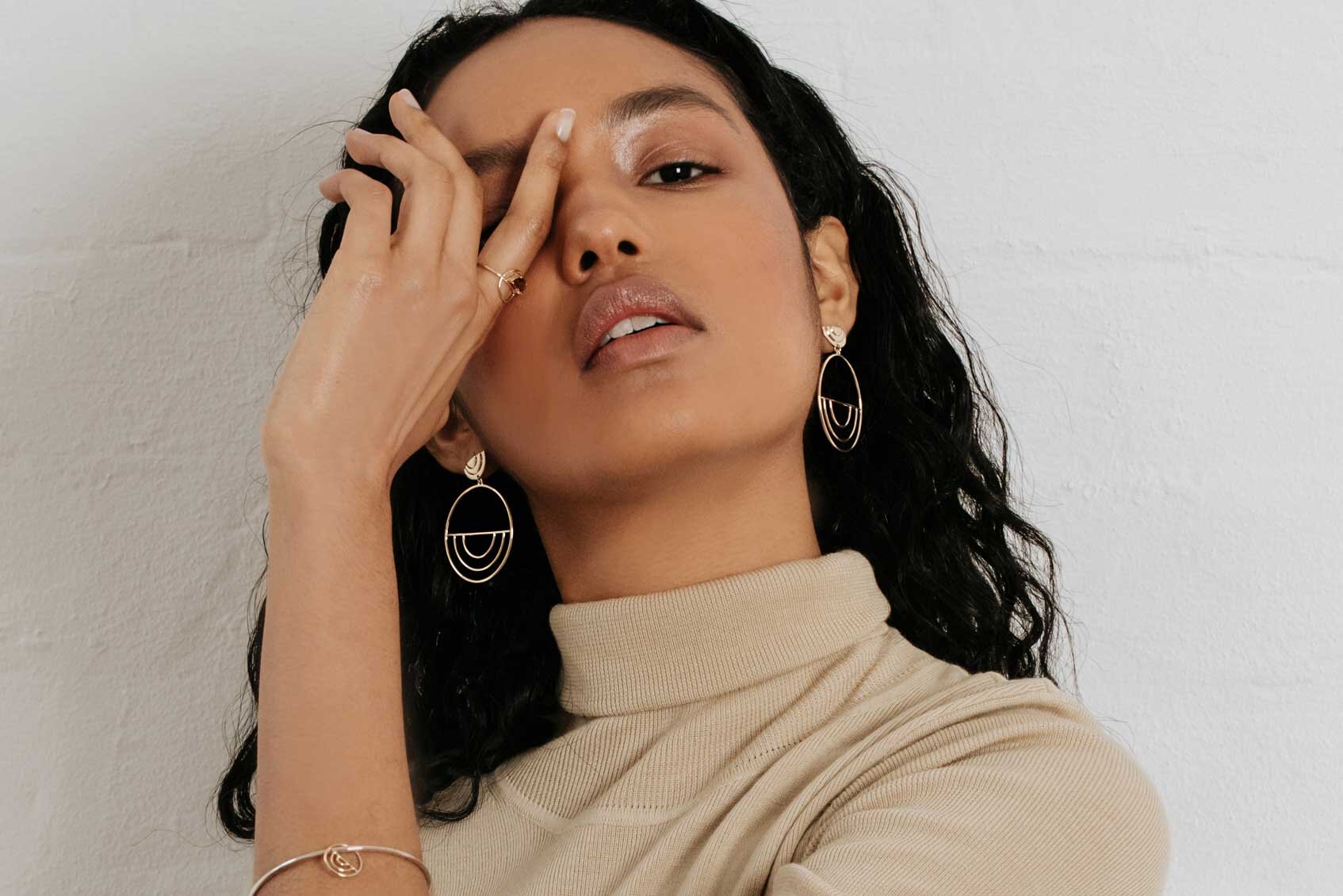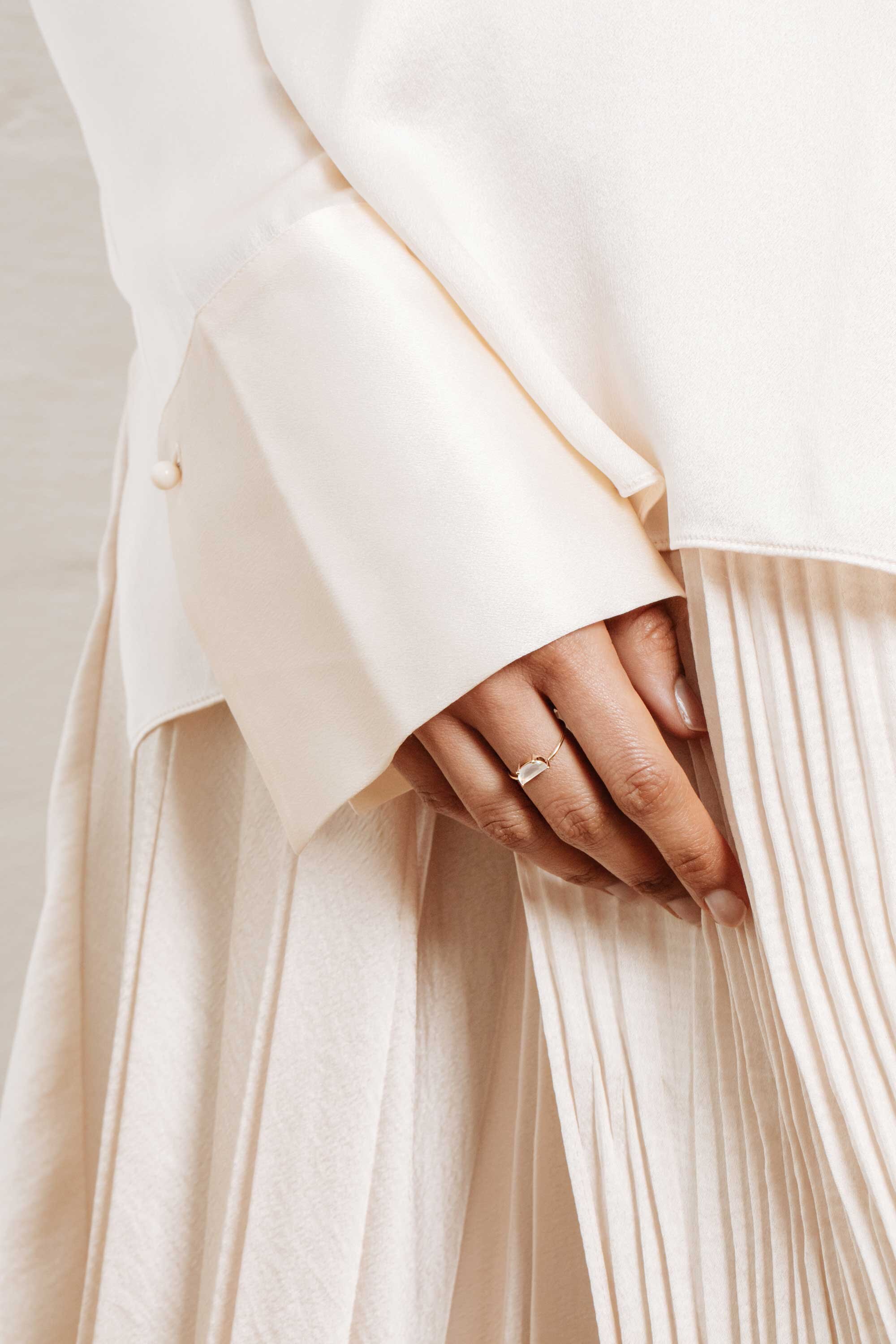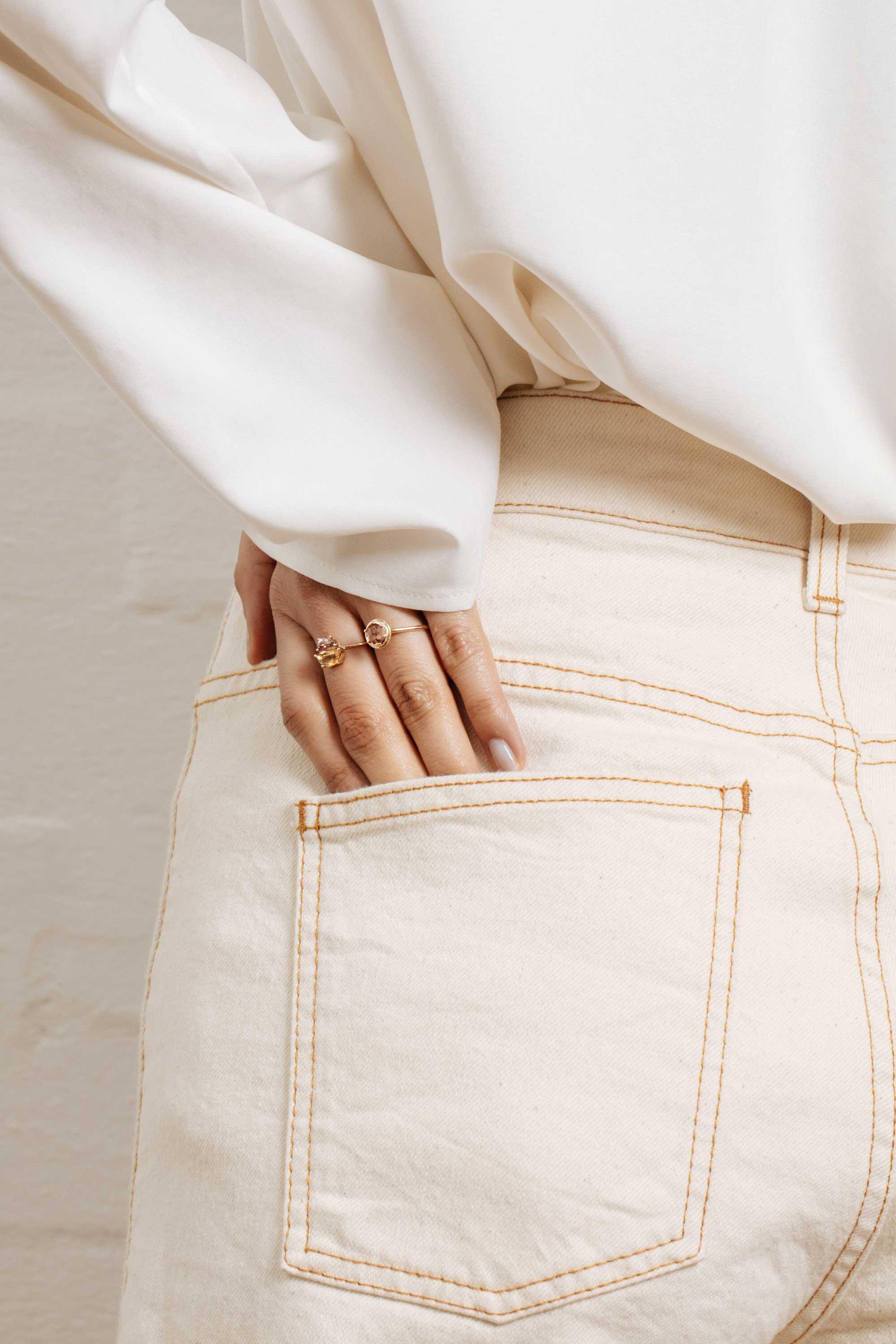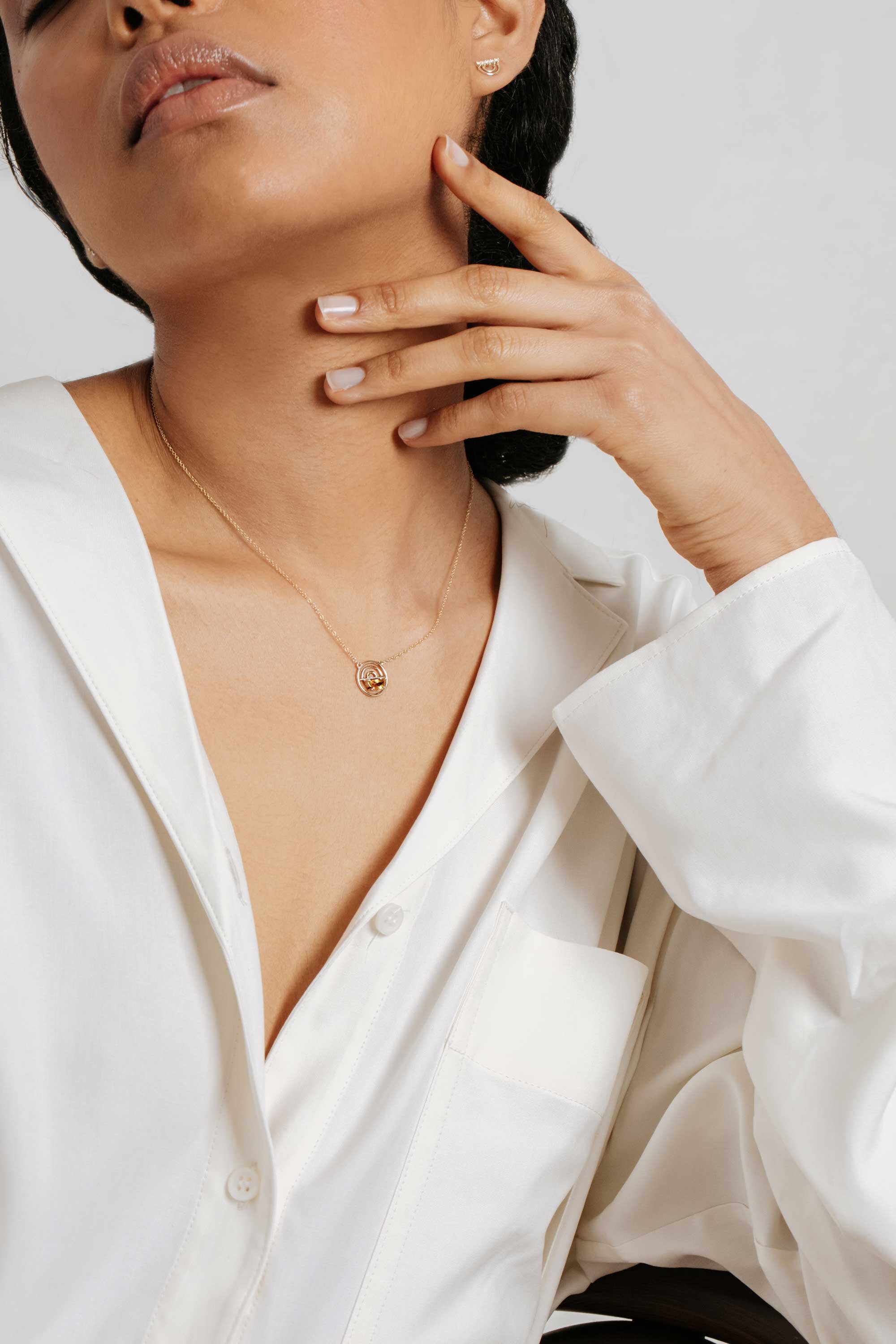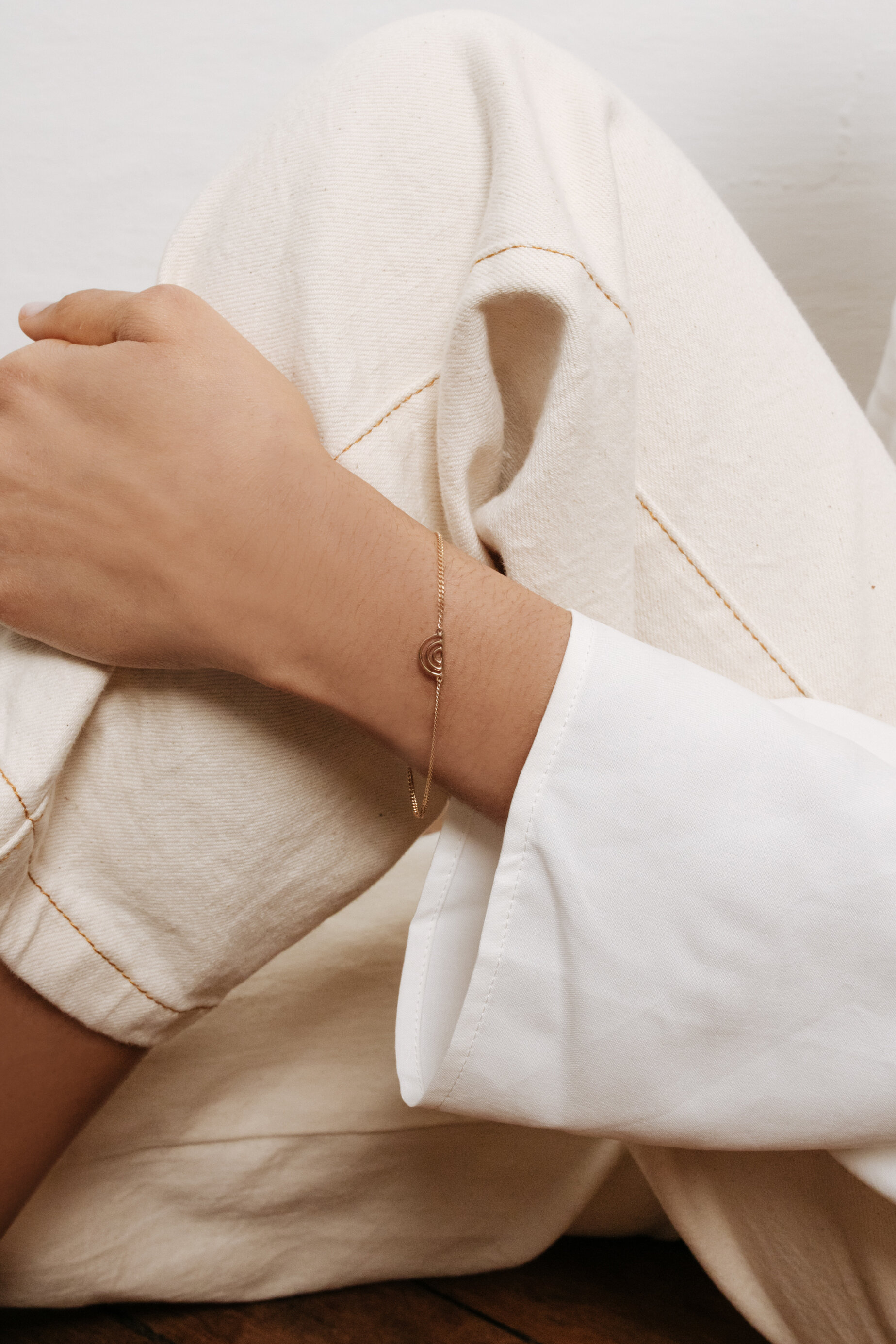This is how you create a conscious jewellery brand
Imagery: Courtesy of Natalie Marie Jewellery
Words: Sarah Tarca // @tarca
Natalie Fitch, Founder of Natalie Marie Jewellery
I bought my first piece of Natalie Marie Jewellery seven years ago. It was a set of fine gold midi rings that I instantly fell in love with. At the time, the brand was little known to both me, and the world and I remember thinking even then that I had stumbled upon something special. They were beautifully crafted, handmade, Australian and they were consciously made – four things that were an anomoly at the time. But that, as I’ve learned, is the Natalie Marie way. The brand was slow fashion, before the term slow fashion was even a concept in some journo’s mind. I remember emailing the company and almost falling off my chair when I received an email back from Natalie herself. Those are the kinds of things that stick with you, and breed a fierce loyalty.
I didn’t know then that the company was only a year old. Nor did I know that my little Northern Beaches NSW secret wouldn’t be a secret for much longer. Seven years on, Natalie Marie Jewellery has 209k followers on Instagram and a loyal following the world over. But amazingly, what pulled me to the brand those all years ago remains exactly the same: an ethos of responsible, sustainably-made pieces, each crafted by hand and intended to be worn (and to last) forever. This is how you build a conscious jewellery brand.
The latest collect is Sabel, an earthy, feminine mix of shapes and stones that honour the earth. “The inspiration of this collection is rooted in the natural materials, pigments and landscapes of the earth,” says Natalie, who calls the collection “quietly extravagant for everyday”. We speak to founder, Natalie Fitch to find out more about Sabel and how to grow consciously while keeping your morals intact.
Pieces from the Natalie Marie Jewellery Sabel collection clockwise from top: Ochre Ring, $230; Violet Diamond Crown Ring, $1060; Tiny Half Moon Ring in Moonstone, $590; Indigo Two Tone Set Earrings, $770
Sabel feels like a very different collection for you…
Sabel is one of my favourite collections to date. We were inspired by the earth; the forms and textures of its landscapes and its rich, organic pigments. This collection marked a slight change in direction for us design wise, in that we worked with a less feminine aesthetic, and focused more on bold, structural forms. The collection is designed to be bold but wearable, quietly extravagant for everyday.
Why was the earth such a big inspiration for this launch?
So many of the materials that we work with as jewellers originate in the depths of the earth. Gold, gemstones and diamonds all begin their formation beneath the earth’s surface, and many natural stones still show the signs of their formation process. Crafting jewellery is a very tangible, process based practice, where we are in a constant relationship with the materials we use.
Peach Zircon pieces from left to right: Half Moon Ring $850; Tiny Rose Cut Ring, $620; Twin Half Moon Ring, $1270 and Rose Cut Ring, $710
Moonstone, Citrine and Peach Zircon feature in this collection. Why these stones?
Each collection we design is accompanied by a new, seasonally curated selection of stones. These stones are all consciously sourced and cut specifically for NMJ. With Sabel we took this tailored approach a step further, as we had specific colours in mind that we wanted to achieve. The tone of the peach zircon we use in Sabel is achieved by carefully heating the raw material until we achieve the shade we aim for. This results in a completely unique and tailored tone to NMJ and Sabel. We experimented with different cuts for Sabel also, introducing for the first time, half moon and rose cut stones. The colours we sourced were chosen in line with the concept of the collection, and intended to reflect the earth’s natural pigments. The radiating arcs that feature throughout the collection are a nod to the earth’s landscape - wide open skies over sprawling plains, rugged canyons and eroded valleys.
Clockwise from top: Natalie Marie Jewellery Mica Ring in Peach Zircon, $950, Ochre Tile Earrings, $990 and Indigo Bangle, $300
You had an ethos of sustainability and “slow-made” way before it was a buzzword. Why was this important to you?
I started NMJ with a strong intention to create consciously, and this is a key part of our business’ DNA. Our production methods and processes have remained the same since the brand was born, eight years ago. At the core of this is in house production, allowing for complete control, and supply chain control and transparency. To this end, it has been at our core to maintain our sense of responsibility around sustainable production and ethical practice across every aspect of the business as we have grown.
“it has been at our core to maintain our sense of responsibility around sustainable production and ethical practice across every aspect of the business as we have grown”
What ethical practices do you follow as part of this value set?
As a brand, we are taking significant steps to not only drive internal progress, but also initiate a broader reform among the Australian jewellery community. We are in the process of becoming accredited by the Responsible Jewellery Council, which is an immensely in depth process, but one we are deeply invested in to ensure that we can really stand confidently behind the label of being a responsible jewellery company. We are so aware of how commonplace the words ‘sustainable’ and ‘ethical’ are now, and that these have somewhat lost their weight. What we are really driven by is a desire to stand behind these claims with confidence that we are going beyond language and seeing this through in every facet of our practise as a manufacturing company and retailer.
In undertaking this process, we have also partnered with some international industry game changers, who act as our mentors and assist us in connecting with a broader community of conscious jewellers, something we hope to establish and build on within Australia in the years to come. Throughout this process, our focus has expanded far beyond our in-house practices, which we have had a great grasp on for many years - to tracing material throughout every single step of the supply chain.
“Growing sustainably can present challenges. The more conscious route is always going to be the less profitable.”
What is the most challenging part of being a sustainable and ethical brand?
Growing sustainably can present challenges. The more conscious route is always going to be the less profitable. We work with a large proportion of Australian sourced materials, pay for Australian labour, choose to work with small scale, independent local suppliers. These choices all come at a cost, but the value is reflected clearly in a product which is not only of superior quality, but comes with the confidence that it has been strictly crafted consciously.
As we make each NMJ order by hand, we don’t purchase in bulk so our cost price is also much higher than a mass produced brand. We work with a select few suppliers who work to the same ethical and sustainable standards that we do and each piece is a labour of love. Materials as well as labour is included in our pricing. That said, we are rewarded daily by every customer that chooses to invest in this journey with us, and that’s enough of an incentive to continue on this path.
What is something that someone might find surprising about your brand?
Every piece that is ordered is made specifically for that customer. Apart from a small range of pieces in our flagship showroom, we don’t hold stock of our jewellery. This not only means that we are functioning as a minimal waste company, but also means that there is the opportunity to make each piece deeply personal for each customer.
What is one message regarding ethical jewellery that you’d like everyone to know?
The jewellery industry is a complicated one, and one with a deep history. As a whole, this industry has been slow in finding its ecological conscience. I would urge anyone investing in a piece of jewellery (and that is what any jewellery purchase should always be – an investment), to consider all aspects of the piece and its production. We try, at NMJ, to give our customers a deep sense of connection with our processes and practices, so that they can truly understand the nature of their investment, and feel confident in their choices.
Our sense of moral responsibility is what drives us. We hope to lead by example and hope that other jewellery companies will undertake similar initiatives to drive long term change, shifting to a point where this type of practice and level of consciousness becomes the norm not the exception.



